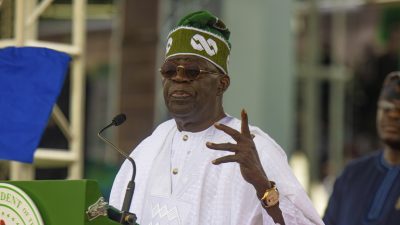*The IMF says the dollar has lost ground in its share of international currency reserves
*The dollar’s dominance has been dented due to central banks looking to diversify their holdings
The dollar share of international reserves has been in decline over the past two decades as central banks look to diversify their holdings into the Chinese yuan and other currencies, according to a new report by the International Monetary Fund.
The dent in the dollar’s dominance, though, is not a consequence of fluctuations in exchange rates or interest rates, but instead it can be chalked up to the moves of other nations’ central banks.
The IMF noted that the dollar has been steadily offset as reserve managers primarily move into two alternative directions, with a quarter turning to the yuan and three-quarters exploring non-traditional currencies from nations that typically play limited roles as reserve assets.
According to Bloomberg report, reserve managers have moved out of dollars in two directions, with one quarter headed into the renminbi and three quarters into currencies of smaller countries that have traditionally played a limited role as reserve assets.
The findings are in a new paper issued by the International Monetary Fund titled: “The Stealth Erosion of Dollar Dominance: Active Diversifiers and the Rise of Nontraditional Reserve Currencies.”
It was co-authored by Serkan Arslanalp of the IMF, Barry Eichengreen of the University of California Berkeley and Chima Simpson-Bell also of the IMF.
“A characterization of the evolution of the international reserve system in the last 20 years is thus as gradual movement away from the dollar, a recent if still modest rise in the role of the renminbi, and changes in market liquidity, relative returns and reserve management enhancing the attractions of nontraditional reserve currencies,” the co-authors wrote. “These observations provide hints of how the international system may evolve going forward.”
While China’s currency is gaining some ground, there’s also a notable shift into currencies including the Australian dollar, Canadian dollar, Singapore dollar, Korean won and Swedish Krona, according to the IMF paper.
“This shift is broad based: we identify 46 active diversifiers that have shifted their portfolios in this direction, such that they now hold at least 5 percent of their reserves in nontraditional currencies,” the paper found.
The findings come as global sanctions against Russia in response to its invasion of Ukraine have triggered fresh debate about the dollar’s dominance of global finance and trade and whether the conflict will accelerate the use of rival currencies, such as the renminbi.
Still, China’s currency has stuggled to gain market share in global transactions as the government enforces strict controls on the flow of money into and out of the country. The latest data from the Society for Worldwide Interbank Financial Telecommunication shows the renminbi remains ranked as fifth most widely used currency for global transactions, the same as last year.
China has pushed for greater yuan adoption across Africa, and its recent talks with Saudi Arabia for a yuan-based oil deal have signaled that nations are at least thinking about some alternative or counterweight to the US dollar, economist Aleksandar Tomic previously told Insider.
“While any deal would be symbolic, the Chinese are not alone in the search for a non-dollar reserve currency,” Tomic said. “Other countries’ need for dollars exposes them to the US financial sector, and consequently gives the US political leverage.”
For China to continue pushing the yuan to take on a greater share of the global reserve currency, Tomic said it would have to prove the yuan’s long-term stability to win the trust of other nations.
Sources: Published March 24/25, 2022 by various media – Insider: markets.businessinsider.com, Yahoo!Finance: finance.yahoo.com, Forex Factory: forexfactory.com, Bloomberg: www.bloomberg.com




